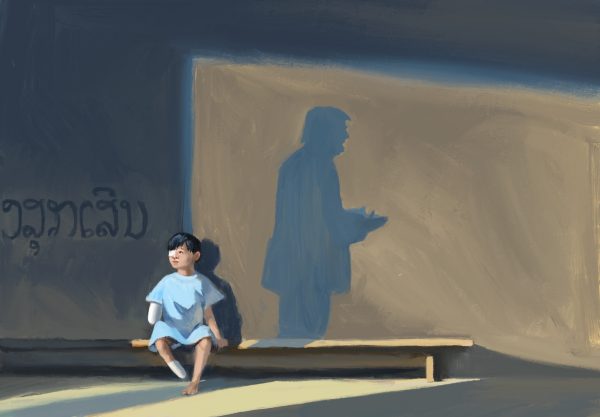With its sweeping aid cuts, the Trump administration has effectively ended U.S. efforts to address a deadly legacy of the Vietnam War.
I’m standing before enough heavy weaponry to level a football stadium. The bombs are arranged on a raised concrete platform behind a building site. They sit, sunbaked and rusting, in informal rows amid a scattering of mines, mortar shells, and beer bottles. Each looks menacing, from the hulking cigar-shaped canisters to the spiked cans with arms like a spider. All are disarmed, or so I’m told.
“The bombies are the worst,” says bomb recovery expert Sawan, gesturing towards a pile of metal balls. “We find them all the time.”
I pick one up to take a photo; it has the shape and weight of a baseball. These are cluster bombs: grenade-like explosives dropped in a hailstorm across a wide area.
“Maybe not that one,” says Sawan, gingerly taking the bombie and setting it aside. She hands me another wrapped in sticky tape. “This one is fine.”
I’m in southeastern Laos near the Vietnamese border. Here, Sawan and her team work to remove unexploded American bombs – the deadly remnants of a forgotten chapter of the Vietnam War.
For decades, the U.S. government supported bomb removal efforts in Laos. This reflected tacit recognition of the historic debt that Washington owed Southeast Asia for its destructive, largely futile wars in the region five decades ago.
Between 1964 and 1973, the U.S. Air Force targeted communist guerrillas and their supply lines in Laos, striking the countryside with nearly 2 million tons of explosives and chemical weapons. It’s estimated that 30 percent of these bombs, most of them cluster munitions, failed to explode. Today, Laos is home to more unexploded bombs than people.
Since the end of the war, unexploded ordnance (UXO) has killed at least 20,000 people in Laos, including 46 deaths last year.
Continue Reading on The Diplomat
This preview shows approximately 15% of the article. Read the full story on the publisher's website to support quality journalism.
